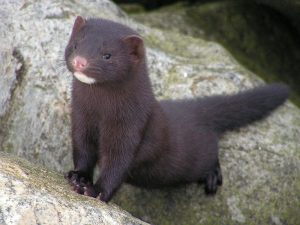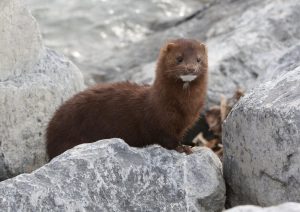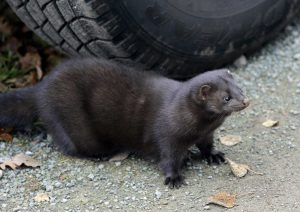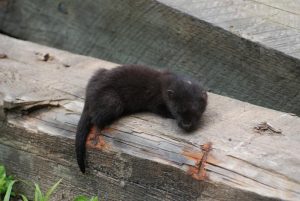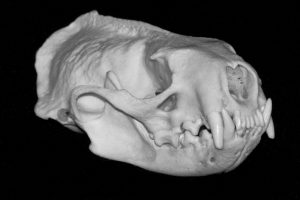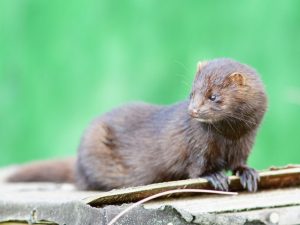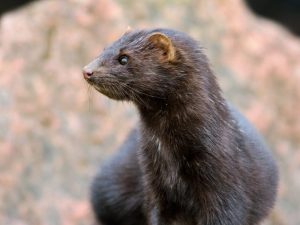American Mink
American minks are carnivore animals, equally active at both land and water. They are farmed to a mentionable extent because of their glossy fur.
Scientific Classification
| Kingdom | Animalia |
| Phylum | Chordata |
| Class | Mammalia |
| Order | Carnivora |
| Family | Mustelidae |
| Genus | Neovison |
| Scientific Name | Neovison vison |
Quick Information
| Description | Size: Males are 12-20 in (30-50 cm) with a tail measuring 6-10 in (15-25.4 cm)Females are 10-15 in (30.4-38 cm) with a tail sizing around 5-8 in (13-46 cm) Weight: Males are 16-48 oz(0.4-1.3 kg) Females are 16-32 oz (0.4-0.9 kg) with variations in different seasons, autumn being the heaviest month Color: Mostly brown in the wild; white to black in captivity |
| Distribution | North America |
| Subspecies |
|
| Habitat | Swamps, marshes, along streams and lakes, forests with nearby water bodies |
| Sounds & Communication | Through chemical, visual and auditory signals Hisses and piercing screeches when it feels threatened, emits subdued chuckles during the mating, creates a purring noise in happiness |
| Lifespan | 10-12 years |
| Diet | Small frogs, waterfowl, ducks, fish, rabbits, and chipmunks |
| Adaptations |
|
| Predators | Birds of prey, bobcats, coyotes |
| IUCN Conservation Status | Least Concern |
Behavior
- American minks are solitary and extremely territorial. Each one marks their area with a typical scent. Males tend to acquire larger territories than females.
- They choose their den with twisted passages and entrances.
- They secrete stinking liquids to ward off their potential predators.
- American minks can kill animals larger than their size by biting off their neck. They are known to store the ‘extra’ foods for later.
Mating and Reproduction
American minks breed only once in every year. They mate between January to April when males fight amongst themselves for winning females’ attention. Males are harsh and ruthless during the mating that lasts for 10 minutes to 4 hours. After a gestation period of 40-75 days, females give birth to 1-8 kits within April and June.
Life-cycle
The kits are born blind and covered with silvery hair throughout. They feed on their mother’s milk for about 1 month and open their eyes after 4-5 weeks. After 1-2 weeks they are weaned and start looking for food all by themselves but remain with their mother until the next autumn.
Male American minks attain sexual maturity at the age of 18 months while females become mature for mating at 12 months.
Interesting Facts
- The species has an ability to swim 3 hours at a stretch in warm water but dies within 30 minutes if the water is cold.
- It can dive down to sixteen feet into the water with proficiency.
- The American mink never uses the same den twice.
- Releasing of minks in numbers (invasive minks) has caused a wide population of the species in some places where it doesn’t belong, threatening other native animals of the region.
References
Published on December 21st 2018 by Sahana Kanjilal under Coniferous Forest Animals.
Article was last reviewed on 9th May 2023.


